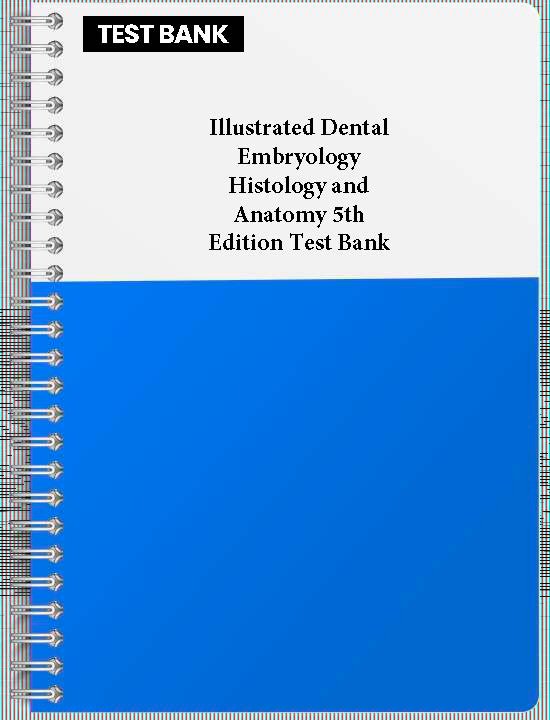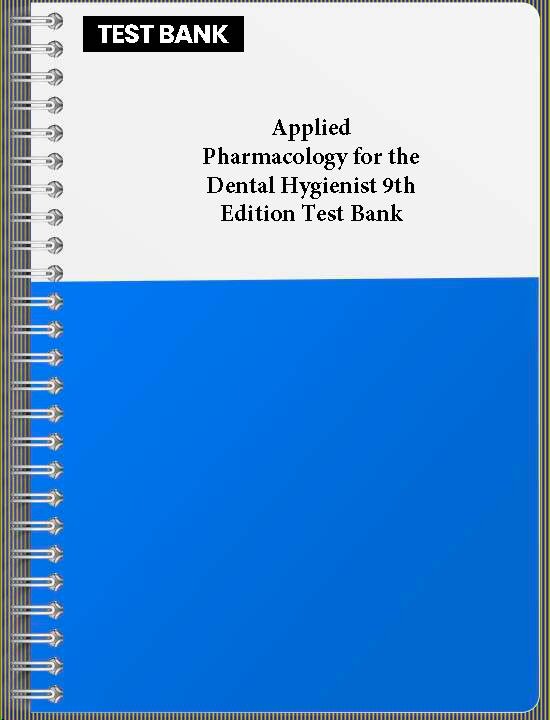Description
Dental Radiography Principles and Techniques 6th Edition Test Bank is an essential resource for dental assisting and dental hygiene students. It covers the foundational principles of dental radiography, technical skills, and safety protocols needed to perform and interpret dental X-rays accurately. This test bank aligns with the textbook, focusing on practical skills and radiographic techniques that are crucial in clinical practice. Here’s an overview of the main areas covered:
- Fundamentals of Dental Radiography: Questions cover basic concepts such as the physics of X-ray production, radiation properties, and the interaction of X-rays with matter. This section introduces key terminology and foundational knowledge necessary for understanding radiographic imaging.
- Radiation Safety and Protection: Emphasizes safety protocols, including radiation exposure limits, shielding techniques, and personal protective equipment (PPE). Questions focus on minimizing exposure for both patients and operators, as well as understanding ALARA (As Low As Reasonably Achievable) principles.
- Dental X-Ray Equipment: Covers the components and functions of dental X-ray machines, including tubehead, control panel, and positioning devices. Questions assess knowledge of equipment operation, maintenance, and troubleshooting.
- Image Receptors and Processing: Focuses on different types of image receptors, including digital sensors, phosphor plates, and traditional film. This section also includes questions on processing techniques for both digital and film-based radiography, emphasizing image quality and error prevention.
- Intraoral Radiographic Techniques: Covers techniques such as bitewing, periapical, and occlusal radiographs. Questions test knowledge on proper receptor placement, angulation, and patient positioning to achieve accurate and diagnostic images.
- Extraoral Radiographic Techniques: Questions focus on panoramic and cephalometric imaging, as well as other extraoral techniques. Topics include machine setup, patient positioning, and indications for using extraoral images in dental assessment.
- Radiographic Anatomy and Interpretation: Emphasizes identifying normal anatomical landmarks, such as the mandible, maxilla, sinuses, and tooth structures, on radiographic images. Questions also cover recognizing common abnormalities and pathologies.
- Radiographic Errors and Quality Control: Includes questions on identifying and correcting common radiographic errors, such as overlapping, elongation, and cone cuts. This section covers techniques to improve image quality and ensure consistent results.
- Digital Radiography and Advances in Imaging: Covers advancements in digital imaging technology, including sensor types, software applications, and the benefits of digital over traditional film. Questions focus on the advantages of digital radiography in diagnostics and patient communication.
- Legal and Ethical Issues in Dental Radiography: Addresses the legal responsibilities associated with radiographic imaging, such as patient consent, record keeping, and confidentiality. Questions emphasize ethical considerations and regulatory standards.
- Patient Management and Communication: Focuses on techniques for effective patient communication, managing patient comfort, and ensuring compliance with radiographic procedures. Questions cover approaches for handling patients with special needs and managing patient anxiety.
- Infection Control in Radiography: Emphasizes infection control practices specific to radiographic procedures, including sterilization of equipment, use of barriers, and cleaning protocols to prevent cross-contamination.
- Three-Dimensional Imaging in Dentistry: Covers the principles and applications of cone-beam computed tomography (CBCT) and other 3D imaging technologies. Questions focus on indications for 3D imaging, advantages, and limitations.
1. Radiation History
2. Radiation Physics
3. Radiation Biology
4. Radiation Protection
5. Radiation Characteristics
6. Dental X-Ray Image Characteristics
7. Dental X-Ray Equipment
8. Digital Imaging
9. Dental X-Ray Film
10. Film Processing
11. Film Mounting and Viewing
12. Dental Images and the Dental Radiographer
13. Patient Relations and the Dental Radiographer
14. Patient Education and the Dental Radiographer
15. Legal Issues and the Dental Radiographer
16. Infection Control and the Dental Radiographer
17. Quality Assurance in the Dental Office
18. Introduction to Dental Imaging Examinations
19. Paralleling Technique
20. Bisecting Technique
21. Bite-Wing Technique
22. Exposure and Technique Errors
23. Occlusal and Localization Techniques
24. Imaging of Patients with Special Needs
25. Panoramic Imaging
26. Extraoral Imaging
27. Three-Dimensional Digital Imaging
28. Normal Anatomy: Intraoral Images
29. Normal Anatomy: Panoramic Images
30. Introduction to Image Interpretation
31. Descriptive Terminology
32. Identification of Restorations, Dental Materials, and Foreign Objects
33. Interpretation of Dental Caries
34. Interpretation of Periodontal Disease
35. Interpretation of Trauma, Pulpal Lesions, and Periapical Lesions










Reviews
There are no reviews yet.